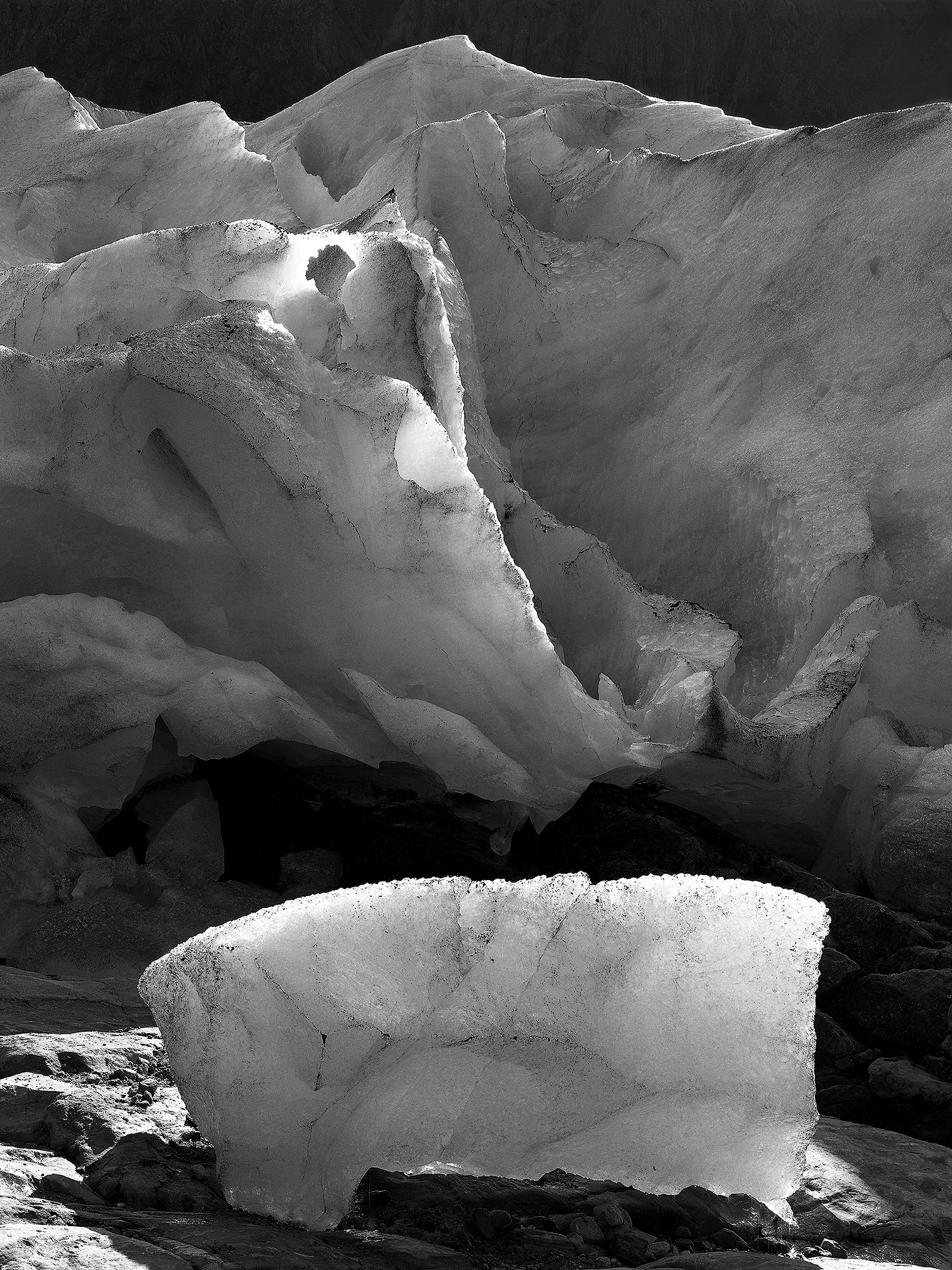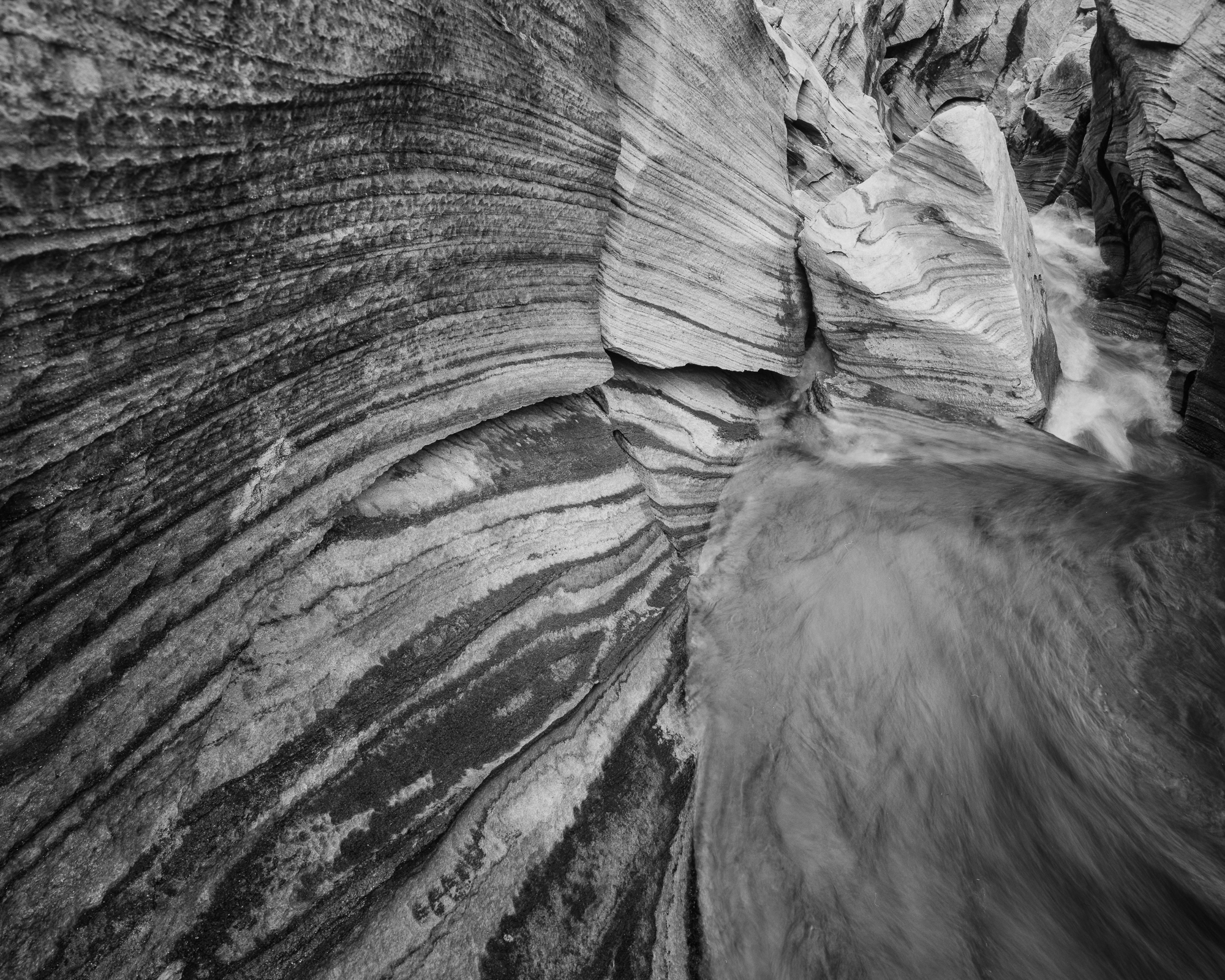Láhko National Park & Svartisen Glacier Workshop 2019. ©Bjørn Joachimsen.
Láhko National Park & Svartisen Glacier Workshop 2019.
Photographer Bjørn Joachimsen invites to a special workshop for photographers who want to experience a very unique and wonderful landscape in Norway. Photographers (amateurs and professionals) who work with traditional film are invited to explore the photographic opportunities and improve their style and technique during a 5 day intensive workshop.
Láhko National Park/Svartisen Glacier/Gildeskål, Norway. July 17th – 21st, 2019
The Arctic Circle divides Norway in half at it’s narrowest point, with the Atlantic Ocean to the west and Sweden to the east. Láhko National Park is located right there, with its spectacular marble and limestone formations (karst formations), surrounded by mountain peaks and glaciers. It is here that we will have our five-day workshop with daily outings to this unusual and spectacular landscape in the center of a country that is beautiful wherever you look. We will also spend a full day by the Svartisen Glacier, which stretches itself almost down to the sea in Meløy municipality. One of our workshops days we will also go to visit interesting and less known locations in Gildeskål.













Bjørn´s sense of adventure and exploration, excitement and enthusiasm will rub off on you, but you won’t need his inspiration to ignite yours; the area is sure to engage you from the moment you step into it.
Most of the time we stay outdoors with our cameras for field work. We spend as little time indoors as possible. You should be devoted to nature as well as photography to take part in this event.
The workshop is a perfect time to delve into Bjørn´s and your own choices. And it’s a perfect opportunity to refine and expand your photographic vistas. It is also a good opportunity to get to know people who share your interests into analog photography and nature.
Láhko National Park & Svartisen Glacier Workshop 2019. ©Bjørn Joachimsen.
Practical information
Dates: July 17th (2 am.) – 21st, 2019 (4 pm.)
Location: Láhko National Park, Svartisen glacier and locations in Gildeskål. Classroom tuition will be held at Ørnes Hotel Ørnes.
Láhko National Park is located close to the Svartisen Glacier and just above the Arctic Circle. Nearest town is Bodø.
Workshop cost is €850.
Additional Costs
Accommodations at nearby Ørnes hotel: Single room: 950 Norwegian Kroner/night
Food: Approximately $60/day (plus alcoholic beverages).
Air travel from your home to Bodø, Norway, then rental car or bus to Ørnes Hotel where we will accommodate ourselves
These costs mest be covered by the participants themselves. Participants must book their room at Ørnes Hotel as soon as their spot is confirmed.
Recommended flights from Oslo to Bodø
Oslo-Gardermoen – Bodø, July 17th, 2019: 8.30 am. – (Bodø 9.55 am)
Bodø – Oslo-Gardermoen, July 21st, 2019: 8.50 pm. (Oslo 10.15. pm)
Book your tickets at www.sas.no
I takes 1 hours 40 minutes to go by car from Bodø Airport to Ørnes Hotel.
Car rental in Bodø is an option. Roads are fairly good and there are no ferrys. The trip includes the famous Saltstraumen.
There is also a passenger boat from Bodø with departure every day at 4. pm.
In order to get to Svartisen we have to take a 15 minutes boat trip across Holandsfjorden.
Tuition language: English. Individual tuition will also be given in Norwegians for those who prefer that.
Maximum number of spots: 8.
Itinerary
We start every morning at 8. pm (except for the first day) and work until 8. pm ever night (except for the last day.)
Day 1: We meet at Ørnes Hotel for presentation and information. Q&A. Image critique and discussion.
Day 2: Field work: Láhko National Park
Day 3: Field work: Láhko National Park
Day 4: Field Work: Svartisen Glacier
Day 5: Field work: Gildeskål
Itinerary will be adjusted to according to weather conditions
More information?
Don´t hesitate to contact me at bjorn.joachimsen@mac.com.
The workshop is sponsored by Ilford Photo, UK.
Sign up
Registration deadline is June 7, 2019.
Láhko National Park & Svartisen Glacier Workshop 2019. ©Bjørn Joachimsen.
About Láhko National Park
Láhko is the karst national park. Karst topography is a geological formation shaped by the dissolution of carbonate rock by water. Calcite marble is the predominant rock type in the national park and leaves its mark on the landscape and the flora. Caves, clints and grikes, dolines, stream sinks (swallow holes), natural bridges and blind valleys are found everywhere. The calcareous bedrock forms a basis for rich plant life and interesting wildlife. The national park has many special ecosystems, including calcareous lakes. The park borders up to the Saltfjellet-Svartisen National Park and the Langvassdalen-Ruffedalen Nature Reserve, and is thus part of one of the largest protected areas in Norway.ENJOY THE SCENERY
Hiking in Láhko is a marvellous experience. Spectacular karst formations, ranging from millimetre-deep rills to large fissures and shafts, are seen everywhere. Rivers vanish beneath the ground only to reappear in a completely different place. Corbel’s canyon, with its water traps, caves and underground rivers, is especially interesting. Outdoor activities Hunting and fishing are popular pastimes and several lakes have good fish stocks. The two most used starting points for trips are the car parks near the Langvatnet and Namnlausvatnet lakes. They offer short, easy walks into the park. Outdoor activities are well prepared for in Láhko. T-marked paths cross the park from Langvatnet to Namnlausvatnet and over to Gråtådalen, a valley in the east. Local hunter and angler associations have several cabins in and around the park, which can be rented. The Norwegian Trekking Association has unlocked cabins just outside the park in Gråtådalen and close to Fellvatnet. There is also an open turf hut in Kvitsteindalen. Those who prefer not to hike along marked paths should visit the northern and eastern parts of Láhko. The area is less accessible in winter because the mountain roads that approach the park are not ploughed. Láhko is, nevertheless, popular for ice fishing and for skiing. The ski season lasts until May in this area.
LANDSCAPE AND GEOLOGY
Virtually all of the Láhko National Park is within an extensive belt of carbonate rocks. The park is a unique, unbroken, alpine limestone plateau. The water dissolves the bedrock, forming a variety of karst features. Some diorite and granite outcrops are found in the northwest, and layers of mica schist and mica gneiss occur everywhere. The central part of the park is a plateau at around 600 m a.s.l., encircled by mountain massifs and alpine peaks. A north-south row of mountains reaches heights of 1000- 1300 m a.s.l. and forms a prominent wall and boundary to the east. Small glaciers originating in the Simlebreen glacier are eye-catchers. Much of the Svartisen ice cap can be seen in the south. Many lakes and rivers The national park has many lakes, notably Fiskvatnet, Svalvatnet and Seglvatnet. The bedrock leaves its mark on the rivers, which often vanish underground for longer or shorter stretches before reappearing. The calcareous lakes have rich bottom vegetation with lime-demanding stoneworts, giving good biotopes and feeding conditions for benthic creatures and fish.
Read more (in English):
View some images from Láhko here:
http://www.joachimsenphotography.com/#/lhko-national-park/
On our way from Ørnes to Láhko National Park we will pass the spectacular Fykan stairs. This is Europe´s best preserved stair construction, with its 1129 steps and 300m height.
The Svartisen Glacier is located a 20 min drive from Fykan.
Would you like a photographic adventure in the north?
I offer tailor made tours, workshops or courses for small groups or individuals on request and share my insights and skills in photography at locations all over Norway.
Contact me for request!

